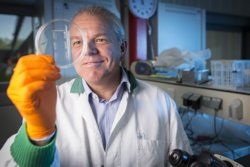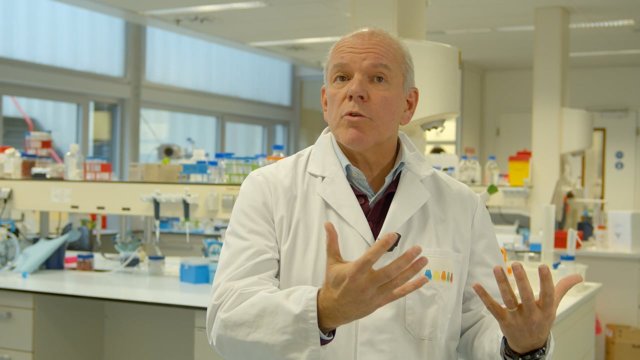In this STAR interview, we speak to Prof Dr Robert Passier of the Faculty of Science and Technology (TNW). STAR is an acronym for Situation, Tasks, Actions, and Results. We also have many “star” colleagues at UT with interesting stories. Robert Passier works on miniature human heart models called heart-on-chips.

Situation
What is the situation (S) outline (at the moment) of your research?
“Cardiovascular disease affects more than 126 million people per year globally. Therapeutics is not able to cure or prevent heart disease and the funnel with new medicines is drying up. Many of our current animal and ‘test-tube’ models are not predictive enough. We urgently need human-based experimental models for a more accurate mimicking of cardiovascular disease.”
Tasks
What tasks (T) are currently involved?
“We have to integrate advanced technologies from different fields, including human stem cells, cardiac biology, molecular engineering, microfabrication, microfluidics, tissue engineering and image & data analysis. They are important to mimic the complexity of the human heart in health and disease. With microfluidic devices for controlled and defined cell culture conditions (“organ-on-chips”) we can create heart tissues and incorporate a dynamic microenvironment comparable to the situation in the human body. For example, we can create multicellular contracting heart tissues and fluid-pumping mini-hearts, derived from human stem cells. In addition, we have to miniaturize, standardize, and automate the platforms for combinatorial and high throughput screening to enable target and drug screening and unravelling biology- or disease-related mechanisms.”
Actions
What actions (A) are you working on and who are involved?
“We are developing various innovative advanced models of the human heart that replicate specific aspects of tissue organization, interactions between cells and exchange of cellular products in microfluidic systems. The appropriate stakeholders must be included from the beginning of this process. For successful implementation, we have to align the interests and needs of patients, clinicians, industry, regulators and many other stakeholders.
Results
What results (R) do you hope to achieve and how will society perceive them?
“My dream is to produce innovative advanced human models, such as contracting and fluid-pumping mini-hearts, that closely resemble the developmental, structural, and functional aspects of human hearts in health and disease. In addition, I would like to establish a screening platform for target identification and validation, while capturing patient heterogeneity. Ultimately, leading to new therapeutic opportunities and better and safer drugs for the treatment of heart disease. Moreover, predictable human heart models may reduce the use of animals for experimental research.”







